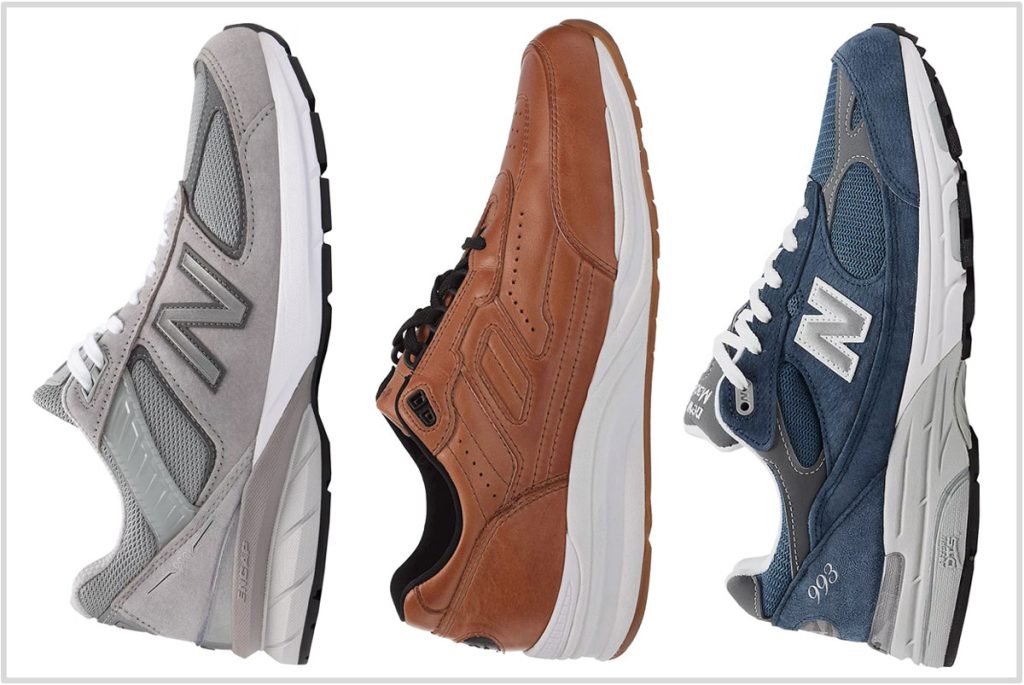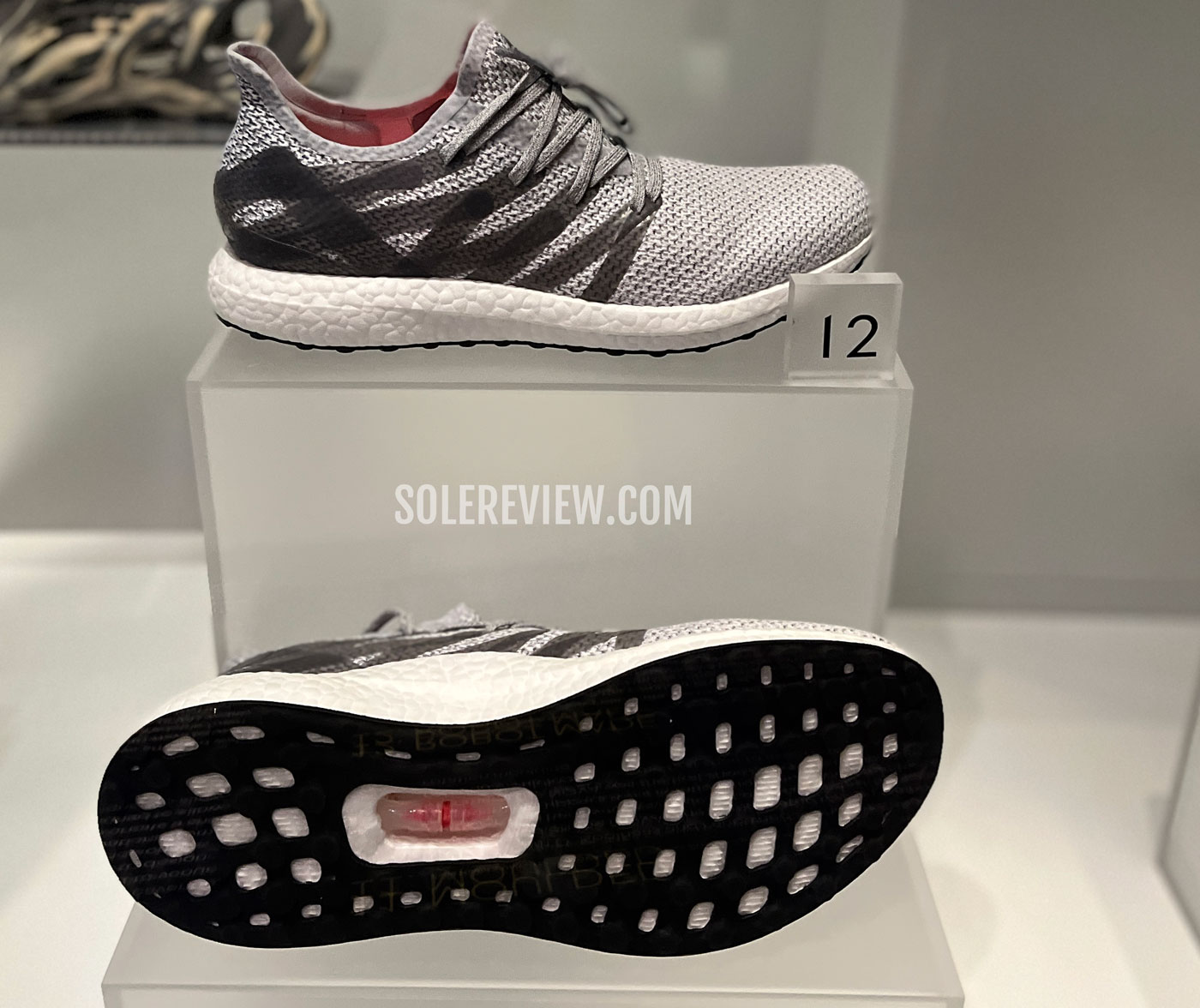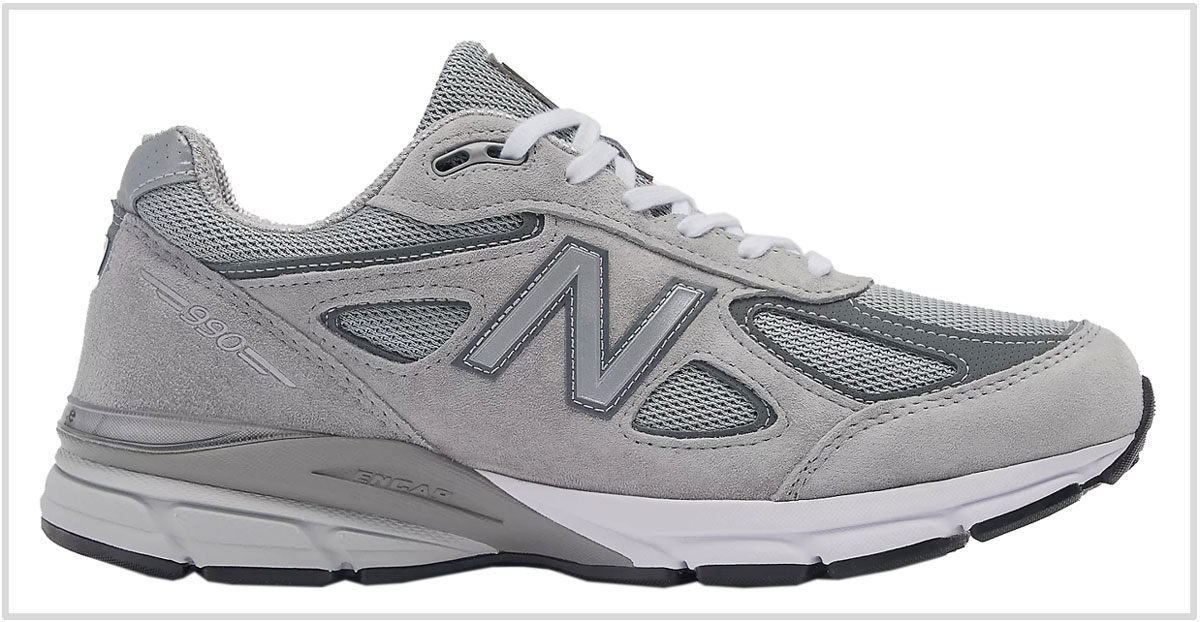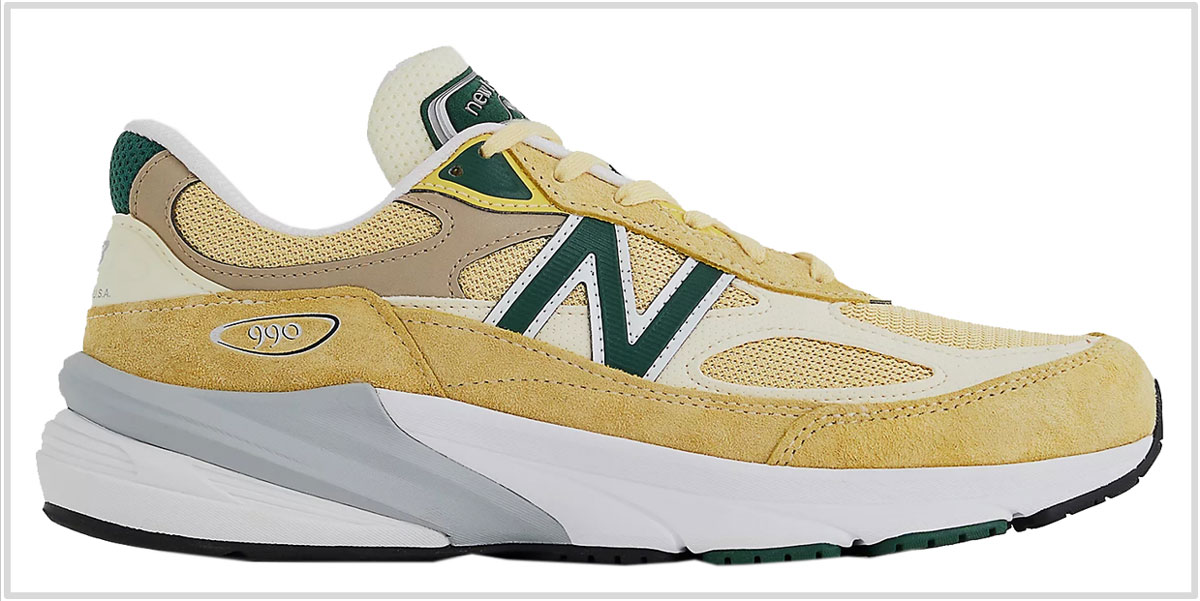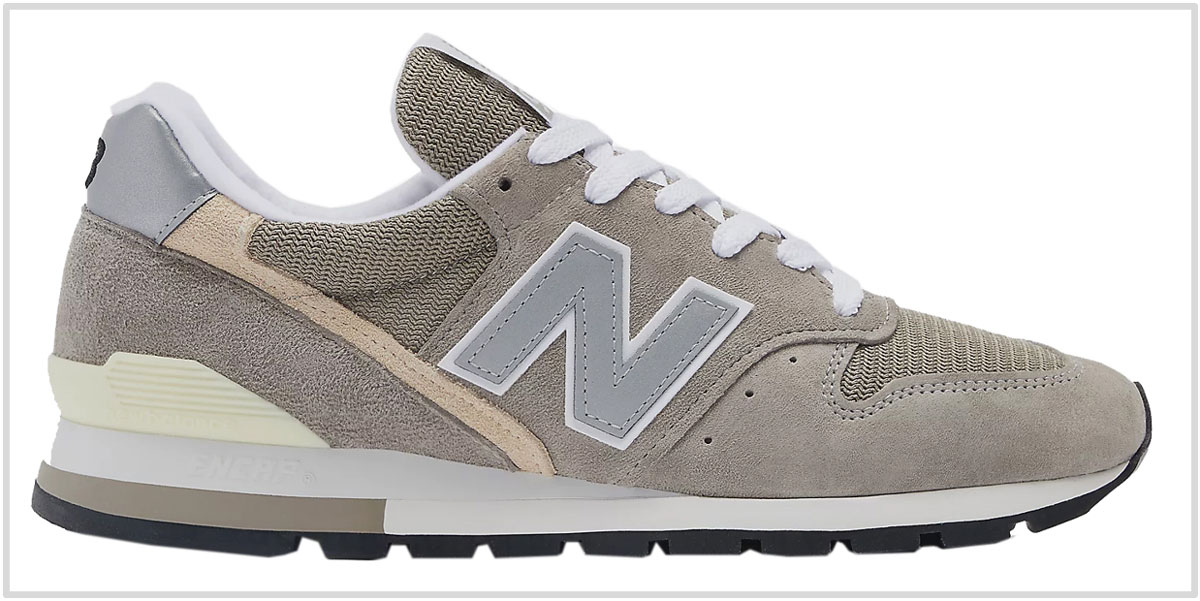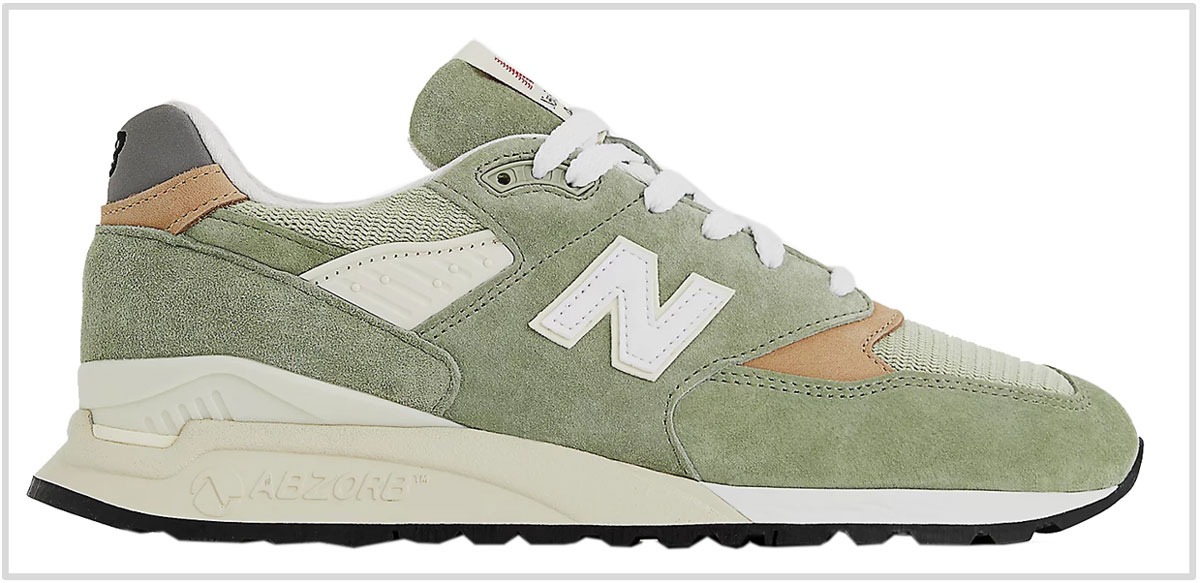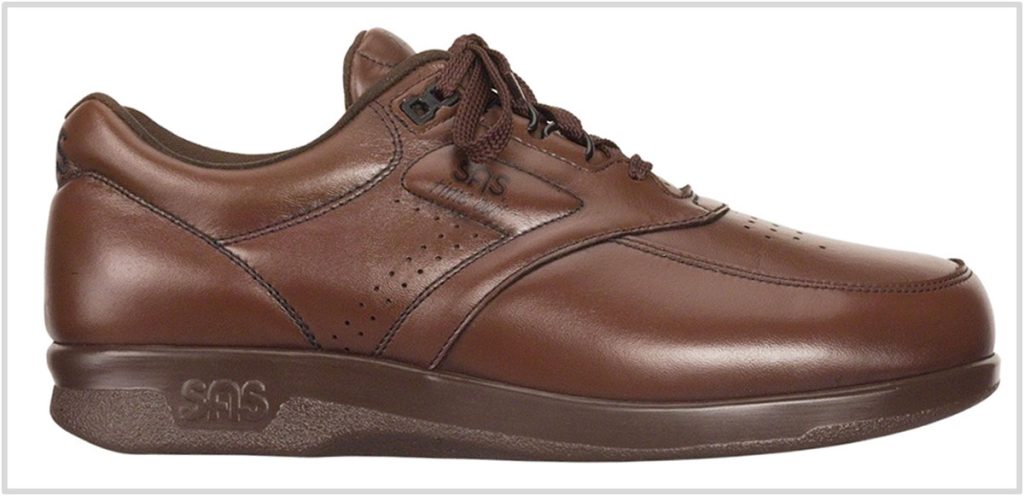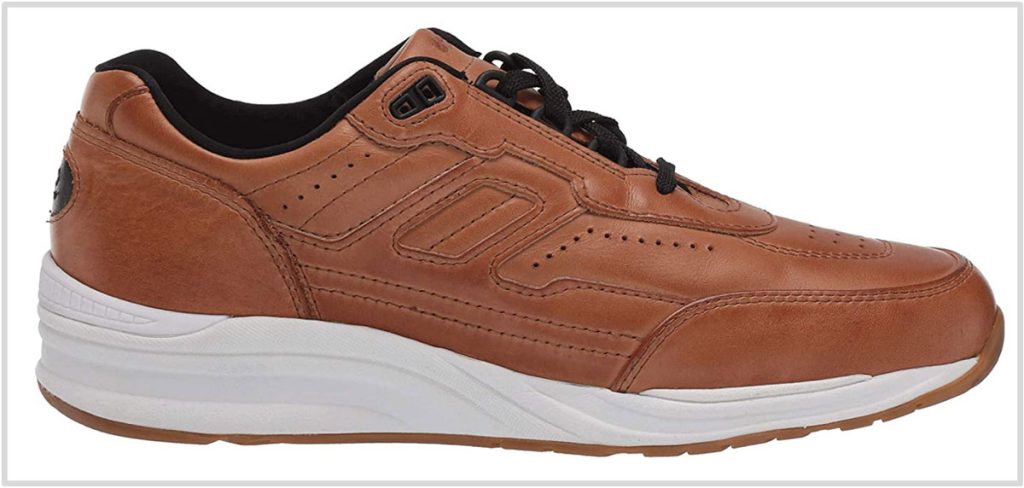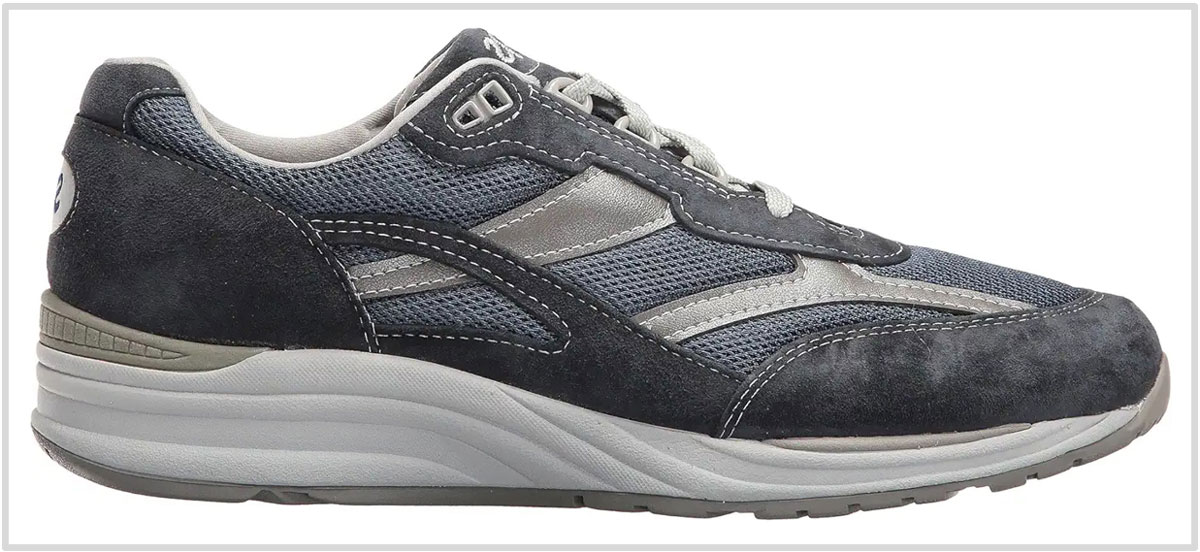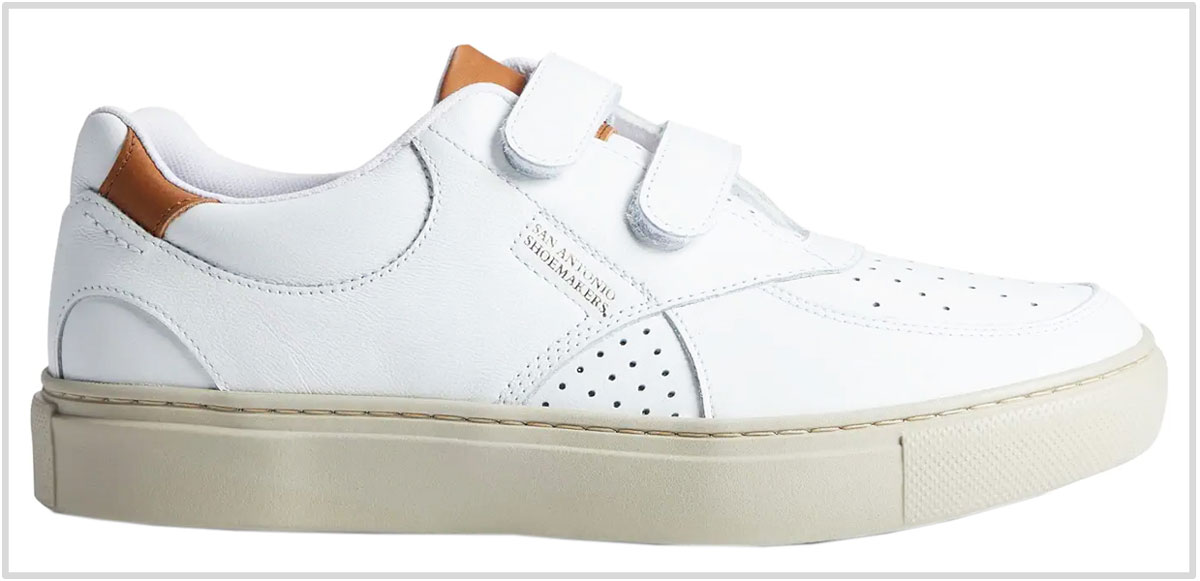This article has been updated with current models for November 2023. Most of the shoes on this guide have been replaced with updated models.
In this product guide:
- 1. Factors to consider
- 2. Made in USA Retro sneaker: New Balance 990 V4
- 3. Made in USA Retro sneaker: New Balance 990 V6
- 4. Made in USA Retro sneaker: New Balance 996 Core
- 5. Made in USA Retro sneaker: New Balance 998 Core
- 6. Made in USA walking shoe: SAS Time Out
- 7. Made in USA walking shoe: SAS Journey Lux
- 8. Made in USA walking shoe: SAS Journey Mesh
- 8. Made in USA walking shoe: SAS High Street
While there are plenty of made-in-USA work boots, only New Balance and SAS have a relatively sizeable assortment of walking shoes and casual sneakers.
Allen Edmonds and Danner also produce US-made footwear, but most of them are either dress shoes or work boots.
Until a couple of years ago, adidas occupied a few spots on this list. That was the result of its now-defunct ‘Speedfactory’, a rapid manufacturing experiment that operated in Germany and Georgia, USA.
The Speedfactory shut as quickly as it opened; the concept production facility closed in April 2020. Thus, the Speedfactory AM4 Ultraboost ceased to exist.
After all, footwear production is a difficult process to automate. Even 3D printing cannot help.
It’s still possible to find the adidas AM4 on StockX or eBay, but New Balance is the only brand that sells ‘Made in the US’ retro sneakers as a part of its permanent collection.
Even so, New Balance makes only a small percentage of their total footwear production stateside. Barring a small number of shoes made in the UK and US, the rest are manufactured in Asia.
It helps that New Balance isn’t a listed company. This gives it leeway to do things that would otherwise be frowned upon by public market investors.
There’s another reason why manufacturing in the US suits New Balance’s overall plans well. In our 2014 review of the 1260V4, we discussed the possibility of New Balance supplying made-in-USA shoes to the military based on the Berry Amendment.
And guess what – the Department of Defense awarded New Balance a $17.3 million contract in 2018 to supply shoes to recruits.
We’re not saying that the contract is the reason behind New Balance’s US manufacturing facility, but it turned out to be pretty convenient.
Given the high prices of New Balance’s tiny US collection, it doesn’t make business sense. But it is certainly excellent PR – and any brand could do with that, particularly in this current economic climate.
Nike’s sourcing was based on an Asian manufacturing model from the start, so it never had a strong domestic production foothold. Only their Air bag cushioning inserts are partially made in their USA-based IHM facilities, a division that is also a general supplier of industrial Polyurethane films and sheets.
Saucony was originally a US brand and made shoes locally until the early ’90s. But its ownership has changed hands a few times and they no longer sell US-manufactured shoes. Interestingly, Saucony’s current owner is Wolverine Worldwide Inc., a company that also owns the Merrell and Wolverine work boot brand.
Interestingly, Wolverine Worldwide was a long-time supplier to New Balance, and they recently sold their US leather business to New Balance.
The Wolverine brand makes some of its shoes in the US, so if Saucony really tried, they could come up with a small collection. After all, they bid for the same US military shoe contract that ultimately went to New Balance.
Before diving into the list, it’s important to clarify the difference between ‘Made in the USA’ and ‘Assembled in USA’ footwear. The percentage of local content needs to be at least 70% to qualify as ‘made in the USA.’ Else, it’s ‘Assembled in the USA.’
This is only for the US; other countries will have different standards. For example, in Canada, the level of localization needs to be 51% or more.
Besides the country of origin, do US-made running shoes offer any advantage over outsourced ones? Functionally speaking, that is?
No. The manufacturing process of industrial products is highly standardized. The way the uppers are cut and put together is the same, and so is the sole molding and fixing process.
However, the supply chain for the North American athletic footwear industry lacks vertical integration. That’s why most US-made sports shoes use basic materials like leather uppers with EVA, PU, or rubber soles instead of fancy mesh and midsole foams.
The US-made shoes also keep the construction simple to keep the labor cost low. A complex design equates to a higher number of assembly operations – and that results in higher production costs.
Since US-made and assembled shoes aren’t superior to their Asian versions, buying one should be nothing more than a matter of personal choice. Things like supporting your local economy, that kind of stuff.
While there’s a lot of general rhetoric about supporting local, consumers will put their money where their mouth is only if the prices are similar to Asia-produced merchandise.
Thus, the share of US-made footwear remains small due to the high retail prices. That’s a given considering that the cost of doing business in the United States is much higher than in Asia.
1) New Balance 990V4
The 990V4 uses midsole tech that was lost to time during the 1990s – like the Encap PU cassette with a softer EVA core. The upper is made of suede, closed mesh, and molded TPU trims – all relics of an era gone by.
Despite its all-too-evident retroness, this shoe was released for the first time in 2016, so this Made-in-USA sneaker is a fairly recent creation.
With all its vintage bits, the 990V4 is a comfortable walking shoe at best; run in the 990 at your peril. Reflective trims on the heel add low-light visibility in the dark.
(Note: The upper uses Pigskin leather.)
2) New Balance Made in US 990 V6
Nothing about the 990 V6 suggests that it is a modern running shoe, because it is not. It weighs 375 grams, has a firm multi-density midsole, and the upper is covered with stitched overlays. The 990 V6 is inspired by vintage running shoe tech – the midsole has a stability bridge and what have you.
Acres of suede leather are sewn to the spacer mesh, and the outsole has rubber – lots of it. The tongue and heel have a soft and padded lining with a vintage feel.
In short, the 990 looks straight out of a high-school yearbook that was recently found in the attic.
And yet, the 990 V6 has a few things going for it. One, it’s assembled in the US with a domestic content of 70% or more. Two, it is a comfortable and stable shoe for low-impact activities such as slow running (aka jogging) and walks.
(Note: The upper uses Pigskin suede)
3) New Balance 996 Core
The New Balance 996 Core is what most performance running shoes looked like in the 70s and up to the early 90s. Most running shoes of this era had a basic EVA foam midsole under a leather and mesh upper.
The 996 Core is a faithful reproduction of the classic silhouette, so you get the same features and benefits. The thick rubber outsole adds grip and durability, and the ride comfort is delivered by the dual-density EVA and PU foam midsole. This is no running shoe, but rather a casual sneaker with excellent styling versatility.
Combining pliable suede leather with a soft mesh creates a comfortable upper with a snug fit. Like other New Balance shoes on this guide, the 996 Core is manufactured in the USA with at least 70% domestically sourced materials.
(Note: The upper uses Pigskin leather.)
4) New Balance 998
The 998 harkens back to the days when Polyurethane foam midsoles were just beginning to show up on running shoes. New Balance called this material ‘Abzorb’, and that’s what the modern reissue of the 998 uses. The Abzorb wedge is locked in with a softer EVA foam core for everyday ride comfort.
As far as use cases ago, the 998 is a comfortable retro running shoe that works for daily walks and streetwear. This version is produced in the United States with a minimum of 70% domestic content.
5) SAS Time out
This $200 walking shoe is all function over form. Though it’s not much of a looker, the leather upper and Polyurethane monosole create a comfortable fit and ride experience.
The firm PU sole provides the necessary stability during walks, whereas the removable insole adds step-in cushioning.
Though the upper exterior is made completely of leather, the mesh padded heel and tongue make the Time Out comfortable out of the box. A D-ring closure allows the laces to be cinched quickly to secure the midfoot.
The SAS Time Out shoe is offered in a total of five widths – that includes slim, narrow, medium, wide, and double-wide.
6) SAS Journey Lux
As the name suggests, the SAS Journey Lux is the premium version of the SAS Journey and Journey mesh sneaker. So the J-Lux shares an identical EVA foam midsole and rubber outsole with the rest of the Journey line and also the SAS Venture sneaker.
The EVA foam midsole and leather-covered PU foam footbed make the SAS Journey Lux a comfortable walking shoe. The traction is delivered by the durable rubber outsole.
This SAS walking shoe looks more contemporary than other products in the brand’s catalog. Not only does the upper use supple leather, but the high level of detail also makes it look like a modern sneaker.
Just like the SAS Time Out, the Journey LUX is available in five different widths for a custom fit.
7) SAS Journey Mesh
The SAS Journey Mesh takes its design inspiration from 90’s running shoes. The soft suede and mesh combo was a common sight during that period, but that’s not the only reason why shoes like the Journey Mesh and New Balance 990 use those materials.
Vendors for performance fabrics and synthetics are often located overseas, so it’s not possible to achieve 70% localization with those materials. In contrast, leather and standard meshes are easily available from American sources.
But that’s a good problem to have. Using suede and mesh makes the shoe comfortable by not requiring a break-in period. This construction also makes the shoe longer lasting and secure fitting.
The J-Mesh has the same sole as the Journey Lux – an EVA foam midsole and soft footbed over a rubber outsole.
8) SAS High Street V
This guide was missing a Made-in-USA sneaker with a hook-and-loop system, so here’s one from SAS. The High Street V uses a simple design that works; a comfortable all-leather upper is secured by a pair of Velcro straps. This makes the High Street V easy to put on and take off, but without compromising the quality of fit.
The brown leather accents are a nice touch to the all-white upper, and the soft leather takes very little time to break in. There are two other colors in the High Street V, namely Mahogany brown and black.
The footbed provides step-in comfort, and the rest of the cushioning is delivered by the rubber cupsole. The upper is stitched to the sole for durability.
Do you own any of these shoes? Improve this review by sharing your insights – submit a review here.

